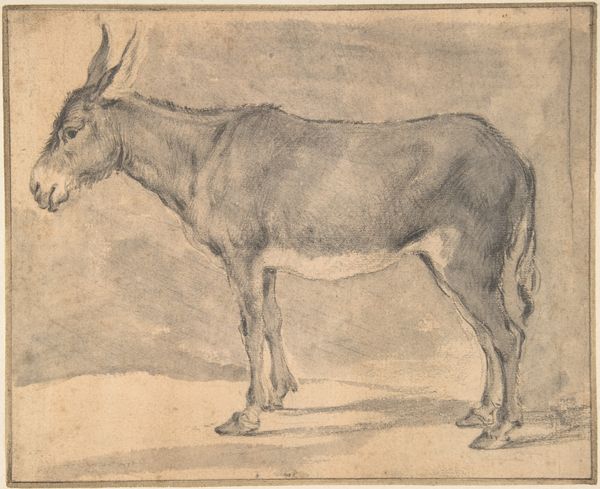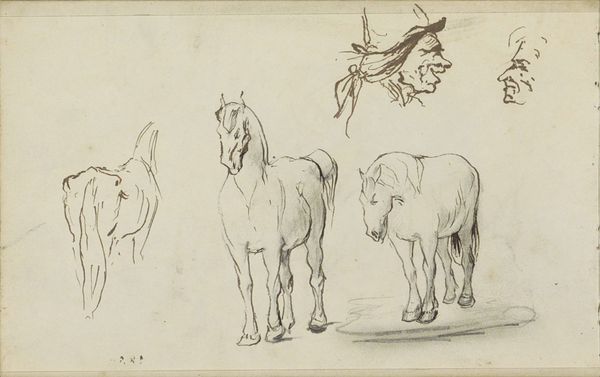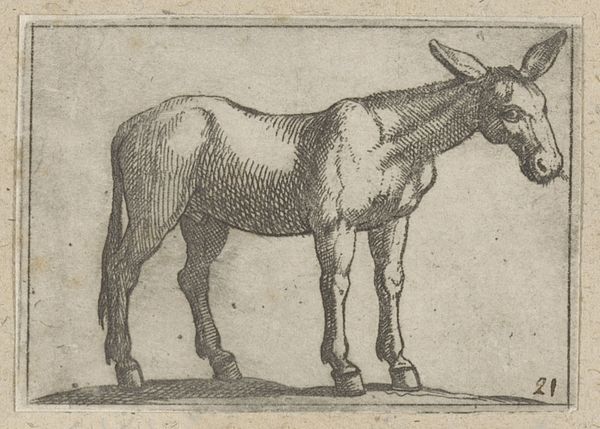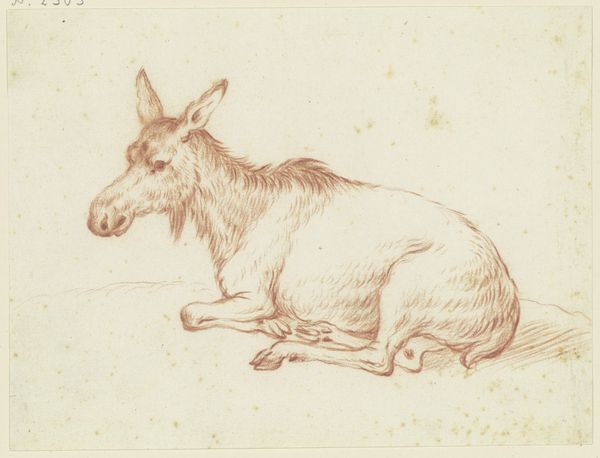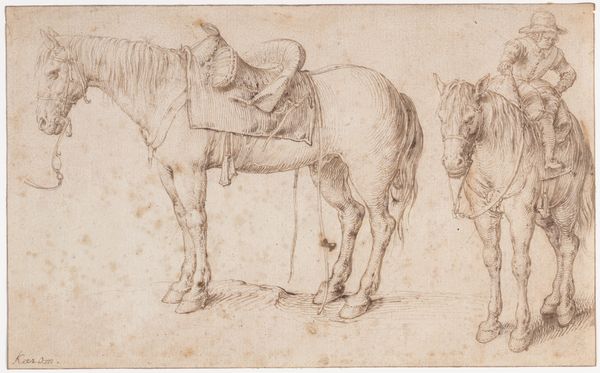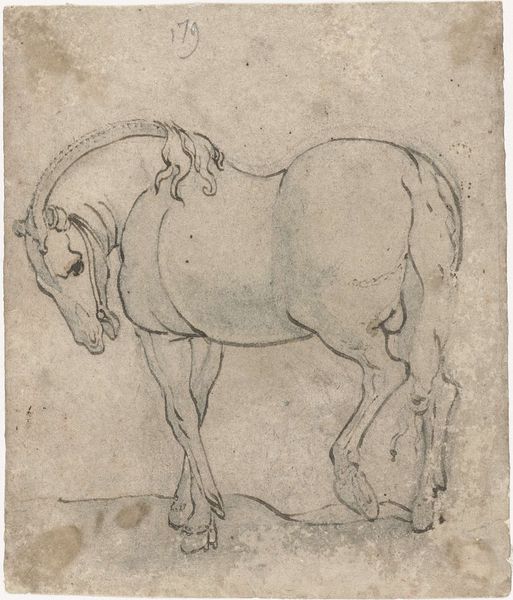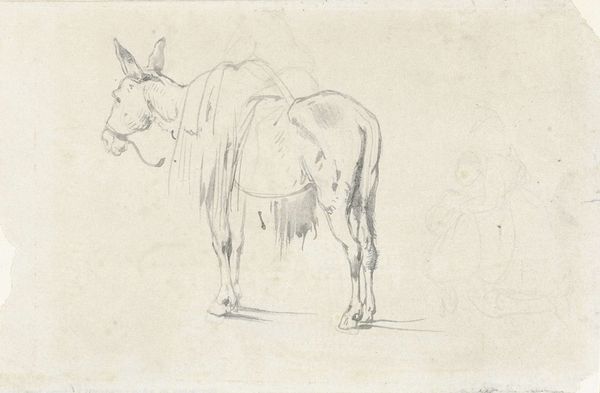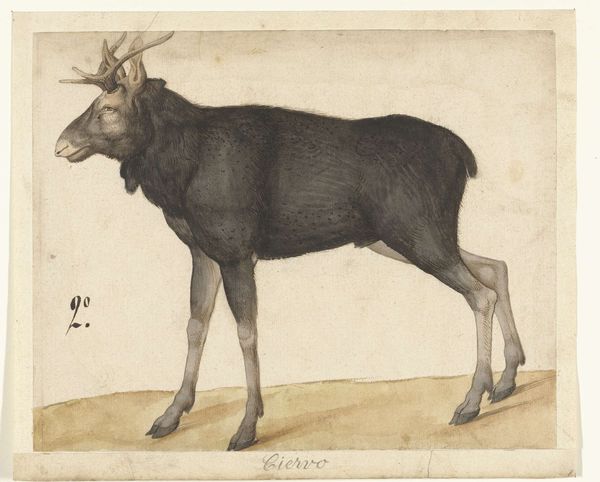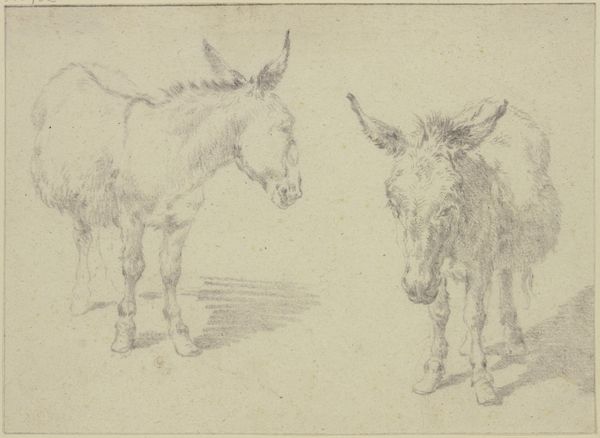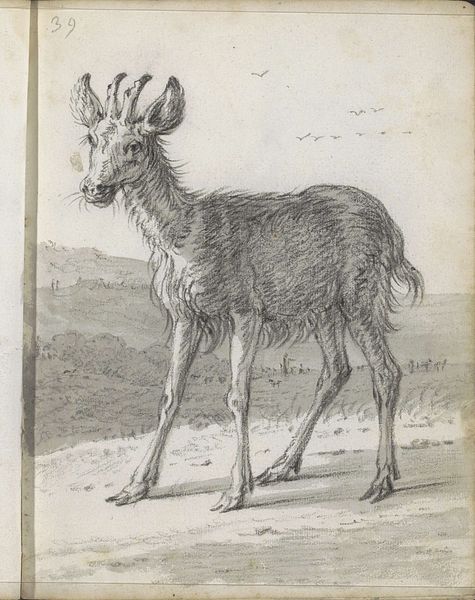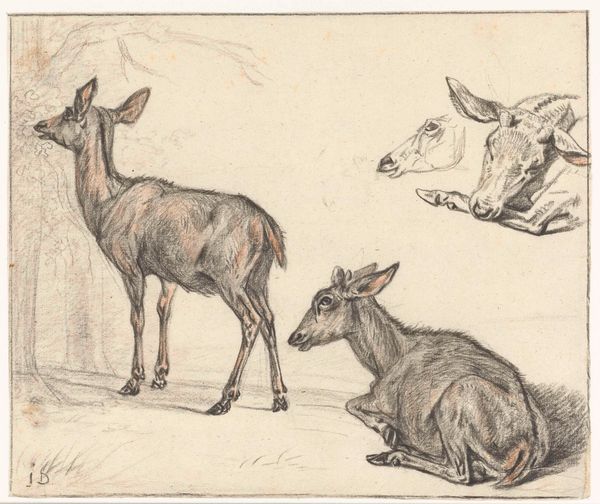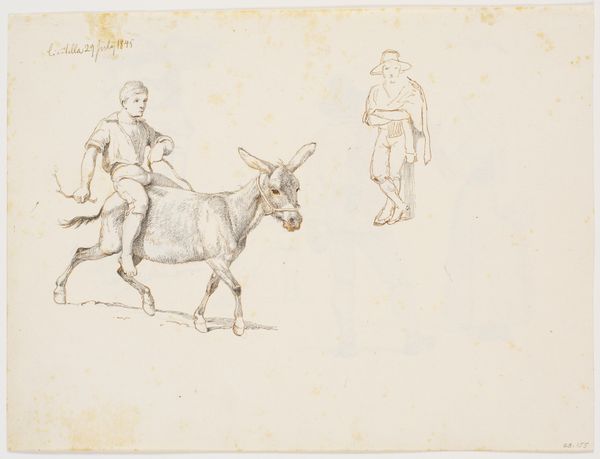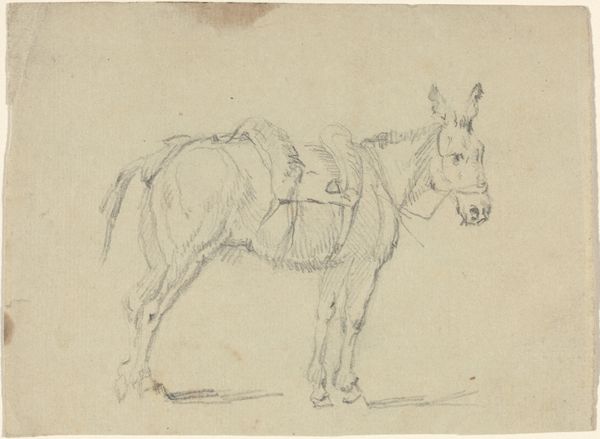
drawing, watercolor
#
drawing
#
baroque
#
animal
#
watercolor
#
genre-painting
#
realism
Dimensions: height 155 mm, width 170 mm
Copyright: Rijks Museum: Open Domain
Curator: Before us is "Study Sheet with Donkeys" by Gerard ter Borch the Elder, a drawing with watercolor, dating from before 1624, currently held in the Rijksmuseum collection. It's striking, isn't it? What catches your eye? Editor: Well, initially, I'm drawn to the physicality of the medium. Look at how the watercolor saturates and pools in places. There's a beautiful rawness. The rough texture feels so present; it reminds us this is made by hand, from the earth. Curator: Indeed. These “tronies” – or studies of faces, in this case, of donkeys, speak to Ter Borch's artistic approach. Notice how he uses this genre to engage with realistic themes while refining his skills. Consider the socio-political context of art production at the time: Such studies allowed artists to develop their repertoire. Editor: Absolutely. And look at how those unfinished sketches at the left—they give us insight into Ter Borch’s process. He’s thinking through the forms, the anatomy of the animal. There’s a beautiful honesty in showing the work still in progress. The means of production is exposed, challenging hierarchical notions of high art. Curator: This type of realism was, of course, entering the Dutch Golden Age. Donkeys were ordinary beasts of burden. The value in representing something so utilitarian offers an important perspective of the values held by the rising merchant classes. Ter Borch, coming from a family of artists, was acutely aware of these dynamics. Editor: The materiality, combined with the representation, further underscores that link. Watercolor – derived from the earth and representing creatures that toil within it – becomes emblematic of the working class’s crucial role in Dutch society. It collapses symbolic distance between art and labor. Curator: It is interesting to ponder, though, whether audiences recognized these parallels. Was this simply an exercise for the artist or a statement? Was it seen as elevating an unglamorous subject, or was its perceived simplicity merely reflective of contemporary taste? Editor: I'd argue both are deeply intertwined. The burgeoning art market valued accurate depictions, sure, but choices always have social ramifications. How the artist chooses a medium and subject are not ever fully neutral. Curator: It makes you consider how economic shifts alter artistic tastes and subject matter. It truly prompts reflection about that period. Editor: Agreed, and thinking through the making of art emphasizes social dimensions so frequently ignored by art history.
Comments
No comments
Be the first to comment and join the conversation on the ultimate creative platform.
